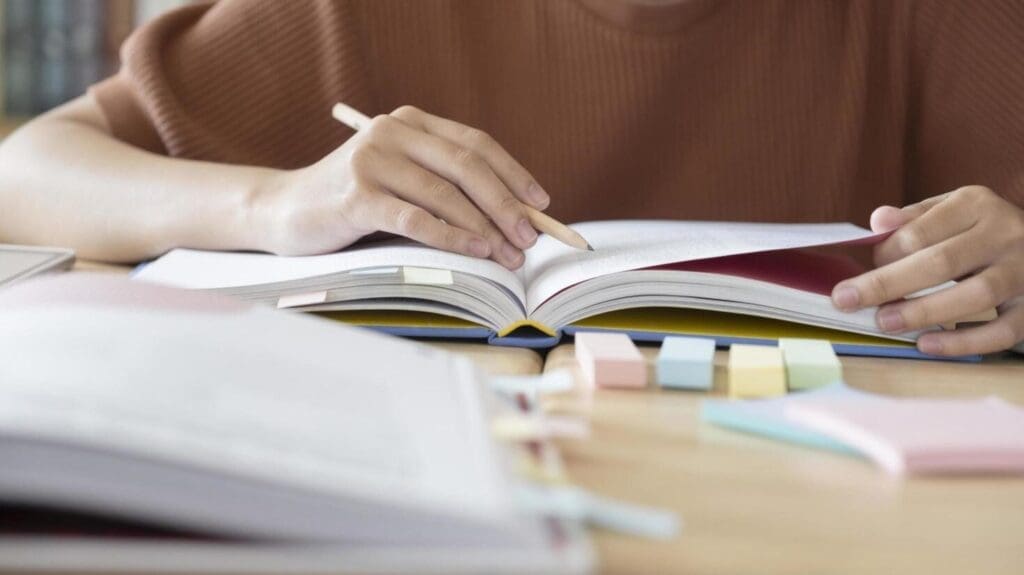When the Shopping Carts Fill, So Does the Pressure

It was late August, and the aisles of the local store buzzed with parents pushing carts full of notebooks, crayons, and binders. Emma, a single mother of two, stopped to calculate the total on her phone. The number flashed back at her — $176.13, and she still hadn’t grabbed the calculator or the backpack her son needed. She sighed, thinking, “Didn’t school supplies use to be cheaper?”
For many students and parents, this scene feels all too familiar. What was once a simple trip for pencils and paper has turned into a major financial event each year. According to the National Retail Federation (NRF), the average U.S. family with K–12 children planned to spend $890.07 on back-to-school items in 2024 — a record high (NRF, 2024). These expenses don’t just cover school supplies; they include electronics, clothing, and other essentials schools now require.
| Category | Average Cost (2024) | Percentage of Total Spending |
|---|---|---|
| Basic School Supplies | $125 | 14% |
| Electronics (laptops, etc.) | $319 | 36% |
| Clothing & Accessories | $249 | 28% |
| Shoes | $139 | 16% |
| Miscellaneous | $58 | 6% |
Even though school supplies might seem small compared to other costs, they add up quickly, especially for families with multiple children. A study by the Education Data Initiative found that parents can spend nearly $1,017 per child annually when including required classroom materials (Education Data Initiative, 2024).
The real issue isn’t just the cost itself—it’s how these prices silently impact families. Some parents report skipping bills or cutting back on groceries just to afford the “required list” from schools. Many students feel embarrassed showing up without the latest binder or brand-name markers, even though learning shouldn’t depend on what’s inside a pencil pouch.
This growing concern has sparked discussions, where educators question whether traditional supply lists still serve modern learning needs. Some argue that schools and communities must rethink how they support families during back-to-school season. That’s exactly where our blogs about learning and education come in — helping parents and students make smarter, more sustainable choices without breaking the bank.
So, what’s really driving the price of school supplies higher every year — and who profits from it?
The True Price — What Rising School Supplies Costs Really Do

Every dollar we spend has a story. For many students and parents, the term school supplies hides more than just pens or folders—it carries worries, trade-offs, and unseen consequences. In this section, we’ll explore how hidden costs ripple through economies, minds, and classrooms. Then, we’ll show how our blogs about learning and education can help lighten that load.
1. Economic Strains: When “Just a Pencil” Isn’t Just a Pencil
a. Inflation, Tariffs, and Supply Chain Shocks
According to the National Education Association (2024), the cost of school supplies rose by more than seven percent in a single year—nearly three times faster than normal inflation. Over the past five years, Empower.com’s economic analysis found that manufacturing costs for paper, pens, and similar items increased by roughly twenty-four percent. Additional tariffs on plastics and metals have made even simple tools like staplers or scissors more expensive, as reported by the National Education Association.
These market changes mean that even the most basic items—pencils, erasers, and glue sticks—carry heavier price tags than ever before.
b. What Families Actually Spend
The Capital One Shopping Research Team (2024) estimated that families spent about five hundred eighty-six dollars per K–12 child on total school expenses, including electronics and clothing. Meanwhile, the National Retail Federation (2024) reported that families planned to budget eight hundred seventy-four dollars and sixty-eight cents for back-to-school shopping.
When researchers at MyImpacks (2024) isolated the cost of school supplies alone, the estimate landed near one hundred fifty dollars per student. A separate price comparison by Consumer Affairs (2024) revealed that the cost of fifteen standard school items rose from about sixty dollars in 2023 to over sixty-two dollars in 2024.
| Category | Average Cost (2024) | Percent of Total Spending |
|---|---|---|
| Basic Supplies | $125 | 14% |
| Electronics | $319 | 36% |
| Clothing & Accessories | $249 | 28% |
| Shoes | $139 | 16% |
| Miscellaneous | $58 | 6% |
Those figures may not sound devastating on their own—but multiplied across multiple children, the expense becomes overwhelming.
c. Hidden and Indirect Costs
There are also invisible expenses behind the receipt total. The Education Data Initiative (2024) found that some parents spend over one thousand dollars annually when including required classroom materials. For teachers, the problem can be even more painful. According to The 19th News (2025), many educators spend about six hundred fifty-five dollars of their own money each year. In North Carolina, NCAE reports that some teachers spend over thirteen hundred dollars—almost twice the national average.
These numbers reflect a bigger truth: the cost of school supplies is not only financial. It affects choices, comfort, and community well-being.
2. Psychological and Social Toll: More Than “Just Supplies”
a. Stress, Shame, and Self-Esteem
Imagine a student showing up without the “right” notebook or a required calculator. The teacher calls attention to it, and whispers ripple through the room. That embarrassment lingers. According to several National Education Association reports, feelings of unpreparedness or comparison can hurt a student’s self-esteem and motivation.
Parents experience their own version of that stress—balancing guilt, pride, and the impossible desire to “keep up” with classroom expectations.
b. Decision Fatigue and Trade-Offs
Some families make difficult financial decisions each August: paying for school supplies or holding off on paying a utility bill. Others cut extracurriculars or skip nutritious groceries. Even students may sense their parents’ anxiety, creating a cycle of worry that affects learning focus and mental health.
c. Classroom Dynamics and Peer Pressure
Within classrooms, supply disparities can create unspoken divides. Students with new, trendy materials often feel more confident, while those with generic or missing tools withdraw quietly. Teachers may unintentionally assume that “well-equipped” students are more prepared overall. Research in the scholarly sphere has begun linking material inequality with classroom participation gaps—proof that the problem extends beyond the wallet.
3. Academic Impacts: How Supply Gaps Affect Learning

Lack of proper school supplies can slow learning, reduce engagement, and widen achievement gaps. Below is a summary of how these shortfalls affect education:
| Impact Area | What Happens When Supplies Are Lacking | Why It Matters |
|---|---|---|
| Task Completion | Students can’t complete assignments if they lack tools like rulers or pens. | Grades drop and confidence falls. |
| Note-Taking & Organization | Without notebooks or folders, students lose track of lessons. | Reduces comprehension and memory. |
| Participation | Group projects or labs may exclude students missing key materials. | Creates feelings of isolation. |
| Skill Development | Missing tools prevent practice in writing and drawing. | Stunts fine-motor and creative skills. |
| Self-Directed Learning | Lack of materials limits curiosity beyond assignments. | Restricts growth and exploration. |
A report by the National Bureau of Economic Research (2015) found that increases in available school resources were directly linked to improved learning outcomes and longer instructional time. Although that study focused on school funding rather than personal spending, it supports the idea that educational tools and resources—however small—matter greatly.
4. What We Can Do to Help
Here’s where our blogs about learning and education step in. While we can’t single-handedly control national pricing, we can equip students and parents with smarter strategies and community support.
With practical advice and an understanding of economic realities, our educational blogs can empower readers to act instead of feeling helpless.
5. Summary of Key Findings
- School supplies costs are rising much faster than household incomes.
- Families can easily spend over five hundred dollars per child each year.
- The pressure extends beyond money—it causes stress, shame, and learning barriers.
- Teachers personally absorb hundreds of dollars in costs annually.
- By spreading awareness, sharing resources, and promoting smarter planning, we can help families and schools move toward fairness and sustainability.
The challenge now is clear: will we keep treating school supplies as an individual burden, or work together to make them a shared responsibility?
A Path Forward — Turning Awareness into Action

Every August, parents and students face the same challenge: stretching tight budgets to afford essential school supplies. What was once an exciting ritual—buying fresh notebooks, pencils, and crayons—has turned into a stressful balancing act for millions of families. The truth is, the rising cost of education-related materials is not a personal failure; it’s a social issue that calls for collective solutions.
In the scholarly sphere, experts emphasize that reducing barriers to learning means looking beyond the classroom and into the financial realities of families. When schools, communities, and policymakers work together, the burden doesn’t have to fall solely on parents or teachers. Programs like local “supply drives,” shared resource bins, and digital tools can all help even the playing field. But awareness is the first and most powerful step.
This is why our blogs about learning and education exist—to inform, to connect, and to empower. By sharing practical advice, highlighting free or low-cost resources, and sparking meaningful conversations, we aim to help students and parents find both relief and hope. Even small actions, like reusing last year’s folders or supporting a local donation drive, can make a big difference.
No family should have to choose between paying bills and buying notebooks. And no student should feel left behind because of what’s missing from their backpack. Together, we can change how society views the real cost of school supplies—not as an unavoidable expense, but as a shared responsibility in shaping future generations.
So, the next time you see a back-to-school sale sign, will you think of it as just a shopping trip—or as a chance to make education fairer for everyone?
Works cited
National Education Association (2024). Rising Cost of School Supplies Increases Burden on Teachers.
https://www.nea.org/nea-today/all-news-articles/rising-cost-school-supplies-increases-burden-teachers
Empower.com (2024). The Currency: The Rising Cost of School Supplies.
https://www.empower.com/the-currency/life/cost-of-school-supplies
Capital One Shopping Research Team (2024). Back-to-School Shopping Statistics.
https://capitaloneshopping.com/research/back-to-school-shopping-statistics/
MyImpacks (2024). How Much Should School Supplies Cost a Family?
https://www.myimpacks.com/blog/how-much-should-school-supplies-cost-a-family/
Consumer Affairs (2024). Back-to-School Supplies: A 2023 to 2024 Price Comparison.
https://www.consumeraffairs.com/news/back-to-school-supplies-a-2023-to-2024-price-comparison-081224.html
The 19th News (2025). Teachers Are Spending Hundreds—Even Thousands—on School Supplies.
https://19thnews.org/2025/08/teachers-spending-school-supplies-debt-crowdfunding/
North Carolina Association of Educators (2025). NC Teachers Spend Hundreds on School Supplies Each Year.
https://www.ncae.org/about-ncae/media-center/press-releases/nc-teachers-spend-hundreds-school-supplies-each-year
“School: These Are the Most Affordable (and Expensive) Stores for School Supplies” — CBS News: average cost per child, variation among stores CBS News
“Why Are Educators Still Buying Their Own School Supplies?” — National Education Association: average teacher spending between $500 and $750 per year National Education Association
“Public School Teacher Spending on Classroom Supplies” — NCES report: 94% of teachers spend their own money; average $478 (median $297) National Center for Education Statistics+1
“Back-to-School Shopping Statistics (2025)” — Capital One Shopping: $141.62 average per household for school supplies, etc. Capital One Shopping
“Back-to-School Supplies: A 2023 to 2024 Price Comparison” — ConsumerAffairs: price changes of common items (e.g. markers, scissors) ConsumerAffairs
“Teachers Are Spending More and More on School Supplies” — EdSurge: $655 average teacher out-of-pocket spending EdSurge
“Teachers + Supplies = An Improved Classroom” — UWCI blog: teachers spend about $500 of their money on supplies United Way of Central Indiana
“Back-to-School Shopping Prices on the Rise” — Pattern blog: typical basket rose 5.45% from 2022 to 2023 Pattern
“Outside-of-Pocket Spending on School Supplies Adds to Strain on Educators” — NEA article: over 90% of teachers spend their own money National Education Association
“Average amount of their own money that public and private school teachers spent …” — NCES table: data on teacher spending without reimbursement National Center for Education Statistics
“2025 Teacher Survey Spending Stats — AdoptAClassroom.org” — shows increase from $600 to $895 over years AdoptAClassroom.org
“The Backpack Math: Cost of School Supplies Up 24%” — Empower article: manufacturing cost increases, family budgets Empower


